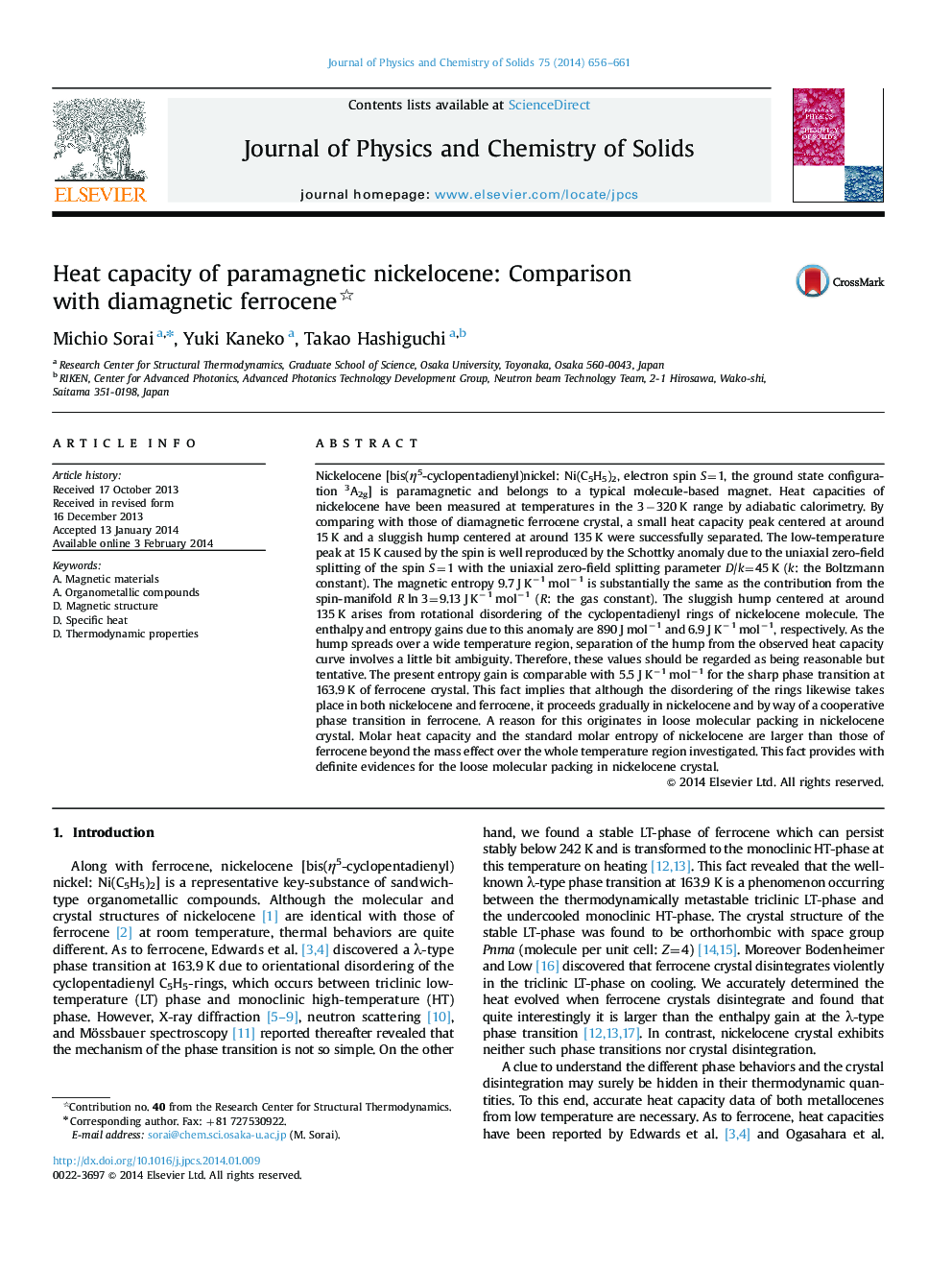| کد مقاله | کد نشریه | سال انتشار | مقاله انگلیسی | نسخه تمام متن |
|---|---|---|---|---|
| 1515806 | 1511537 | 2014 | 6 صفحه PDF | دانلود رایگان |

• Heat capacities of nickelocene were measured in the 3−320 K temperature range.
• A small heat capacity peak at 15 K and a sluggish hump around 135 K were detected.
• The peak at 15 K originates in the electron spin S=1 with zero-field splitting.
• The hump around 135 K arises from rotational disordering of nickelocene molecule.
• The enthalpy and entropy gains at two anomalies were estimated.
Nickelocene [bis(η5-cyclopentadienyl)nickel: Ni(C5H5)2, electron spin S=1, the ground state configuration 3A2g] is paramagnetic and belongs to a typical molecule-based magnet. Heat capacities of nickelocene have been measured at temperatures in the 3−320 K range by adiabatic calorimetry. By comparing with those of diamagnetic ferrocene crystal, a small heat capacity peak centered at around 15 K and a sluggish hump centered at around 135 K were successfully separated. The low-temperature peak at 15 K caused by the spin is well reproduced by the Schottky anomaly due to the uniaxial zero-field splitting of the spin S=1 with the uniaxial zero-field splitting parameter D/k=45 K (k: the Boltzmann constant). The magnetic entropy 9.7 J K−1 mol−1 is substantially the same as the contribution from the spin-manifold R ln 3=9.13 J K−1 mol−1 (R: the gas constant). The sluggish hump centered at around 135 K arises from rotational disordering of the cyclopentadienyl rings of nickelocene molecule. The enthalpy and entropy gains due to this anomaly are 890 J mol−1 and 6.9 J K−1 mol−1, respectively. As the hump spreads over a wide temperature region, separation of the hump from the observed heat capacity curve involves a little bit ambiguity. Therefore, these values should be regarded as being reasonable but tentative. The present entropy gain is comparable with 5.5 J K−1 mol−1 for the sharp phase transition at 163.9 K of ferrocene crystal. This fact implies that although the disordering of the rings likewise takes place in both nickelocene and ferrocene, it proceeds gradually in nickelocene and by way of a cooperative phase transition in ferrocene. A reason for this originates in loose molecular packing in nickelocene crystal. Molar heat capacity and the standard molar entropy of nickelocene are larger than those of ferrocene beyond the mass effect over the whole temperature region investigated. This fact provides with definite evidences for the loose molecular packing in nickelocene crystal.
Figure optionsDownload as PowerPoint slide
Journal: Journal of Physics and Chemistry of Solids - Volume 75, Issue 5, May 2014, Pages 656–661